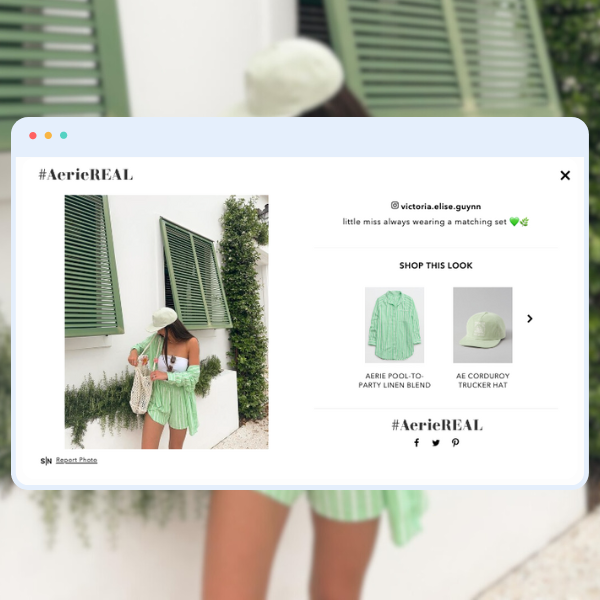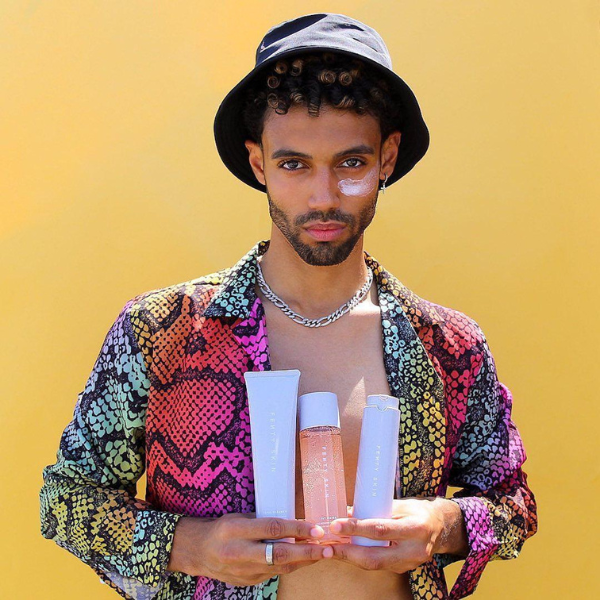The traditional marketing funnel, born from the AIDA model in the late XX century, has long guided marketers. However, as consumer behaviors continue to evolve, it’s clear that change is needed. Enter Gen Z, the generation of change, poised to revolutionize how we perceive and navigate the shopping journey. Defined by their distinct priorities, influences, and tech-savvy nature, Gen Z serves as the driving force behind the reshaping of the conventional consumer funnel.
According to a recent collaborative article from Vogue and Archival titled “Gen Z Broke the Marketing Funnel“, Gen Z’s consumption journey has metamorphosed into an infinite loop, spiraling from inspiration to exploration, community, and loyalty. This dynamic landscape blurs traditional boundaries, creating a fluid dance between discovery and engagement.
Each stage of this loop is integral to understanding this new shopping behavior, presenting both challenges and opportunities for brands. Explore Gen Z shopping with us, as we offer insights to understand how this new consumer journey impacts us all.
Inspiration stage
In this stage we witness the innate digital fluency of this generation taking center stage. Gen Z, as the generation practically born with smartphones in hand, approaches social media with a unique perspective. For them, the internet isn’t just a tool but a trusted companion, especially when it comes to seeking inspiration.
Online platforms serve as virtual runways where Gen Z can both draw inspiration and share their own. This becomes evident as nearly half of them report that they shop or browse for items to purchase on social media at least once a week.¹
In today’s digital landscape, where content bombards our social feeds, standing out poses a significant challenge for brands. However, Gen Z is no stranger to the digital game, and they are willing to do the heavy lifting. According to Ben Harms, chief growth officer at Archrival “they consider inspiration and discovery foundational to their experience and even core to who they are”.
Yet, the real challenge lies in delivering that inspiration precisely when and where it’s needed. While platforms like YouTube, Instagram, TikTok, and Snapchat dominate Gen Z’s digital realm, simply being present isn’t enough. Authentic connection is key. Pinterest is a great example of how to connect with Gen Z. Data from the platform reveals that Gen Z comprises 42% of their global monthly active users.² This enthusiasm is driving viral trends across various social platforms. You might have noticed the latest trend where users search for terms that resonate with their vibe and then share a personalized photo grid. This surge in activity has resulted in a 4x increase in search traffic on Pinterest.³
Creators also play a crucial role in this journey, with 7/10 Gen Z users finding TikTok creator content relatable and attributing social media creators to setting new trends. Moreover, Gen Z places value on diversity, preferring brands that collaborate with a varied range of creators.
Exploration stage
As social media started playing a bigger role in inspiring purchases, everyone thought Gen Z shopping would be driven by the chance for impulse buys with those handy “swipe to buy”. This is how social commerce platforms like TikTok Shop were born. But it turns out Gen Z is not the impulsive type.
They’re all about doing their homework before committing to a purchase. In fact, they are treating social media as a search engine. According to TikTok’s head of luxury and auto brand partnerships for global business solutions, the platform’s search volume has increased “dramatically” over the last two years. This shows how Gen Z uses social media to seek out product information and gather insights from others.
That’s where user-generated content (UGC) comes in handy. Gen Zers trust their friends and family the most when it comes to buying decisions, with over half ranking them among their top three influencers.⁴ But creators come quite close. Gen Zers are 10x more likely than Millennials to buy stuff because their favorite influencer or blogger recommended it.⁵






Even though they’re practically glued to their screens, Gen Z shopping still digs the whole in-store experience. It’s not just about the transaction, but about personalization, socialization, and self-expression. For Gen Z, the in-store experience fosters a sense of community, serving as a powerful means of forging connections.
Ultimately, when it comes to getting Gen Z conversions, it’s all about hitting the right notes with your messaging. If they feel like you’re not speaking their language, they won’t hesitate to check out what others have to offer.
Community stage
The secret recipe for success for brands today lies in fostering a sense of community. It’s not just about selling products anymore. It’s about making shoppers feel like they’re part of something bigger and more meaningful. In our previous article ‘Why build a brand community: 5 reasons you can’t ignore‘, we delved into this topic, offering valuable insights for a deeper understanding.
Brands succeeding in the community stage go above and beyond by engaging Gen Z with experiences that resonate deeply. After all, 64% of customers say shared values are what create a trusted bond with a brand.⁶
What makes a brand stand out? It goes from offering exclusive content, to challenging social norms, engaging in the comments, and sponsoring events their audience likes. Brands that evoke strong emotional connections receive three times more word-of-mouth recommendations than those that don’t.⁷


Gen Z certainly values community, but they expect brands to continuously earn it by providing engaging experiences over time. That means providing a diverse range of touchpoints for exploration beyond mere transactions in the realm of Gen Z shopping. It’s crucial to recognize that community isn’t necessarily synonymous with loyalty, but when done right, it can undoubtedly foster it. Brands need to invite Gen Z into a community where they feel valued, understood, and motivated to stick around. The best way to do this is through brand ambassadors who embody the brand’s values, solidifying the community bond.
Loyalty stage
Once you’ve got your community up and running, cultivating loyalty becomes simpler. While loyalty metrics usually focus on repeat sales, it’s smart for brands to broaden their view, especially with Gen Z. This generation seeks a more reciprocal relationship, where loyalty extends beyond mere transactions.
For Gen Z, loyalty isn’t solely about making purchases. According to Archrival, it’s about genuinely loving a brand, even if they haven’t made a purchase, and actively engaging on social media. So, it’s all about building real connections and keeping the conversation going.
Another big thing that keeps Gen Z hooked is user-generated content (UGC). It creates a sense of belonging and involvement, allowing consumers to remain connected to the brand even after a purchase. That’s why brands must prioritize creating authentic, high-quality, and innovative content strategies to retain Gen Z’s loyalty over time.
And in this stage, let us not forget about values. Gen Z is a generation known for its conscientious and socially aware mindset. According to the PDI Business of Sustainability Index, 91% of Gen Z say they want to buy from sustainable companies. Even more, 77% are willing to pay more for it.
Diversity, ethics, and sustainability are critical factors for Gen Z when choosing which brands to support. They will not hesitate to stop supporting a brand if they feel they are not aligned with these values. Transparency is essential here, as Gen Z expects brands to walk the talk when it comes to relevant issues. Stay true to who you are and show Gen Z that you’re on the same page, and they’ll stick around.
Embracing innovation: Gen Z and the new consumer journey
Gen Z shopping has undeniably influenced our habits, reshaping the very fabric of the retail landscape. Their integration of social media into daily life has transformed shopping into a multifaceted experience. While Gen Z is a driving force behind this change, its impact is not limited to them alone, but rather extends beyond their demographic. Brands must adapt to this shift. Succeed comes by embracing innovation and crafting content that resonates with each stage of the new consumer loop.
To navigate this dynamic landscape successfully, brands can leverage platforms like Social Native. From inspiring the initial spark to fostering community engagement and driving long-term loyalty, Social Native offers a comprehensive solution. Partner with us to unlock the value of authentic social content, harnessing UGC and Creators to embrace Gen Z shopping at every loop stage.
- Source: The Rise of the Gen Z Consumer, ICSC (2023).
- Source: Pinterest Internal Data, Global, Users Aged 18-24, Pinterest (2023).
- Source: Pinterest Internal Data, US, Pinterest (Dec 2023 – Feb 2024).
- Source: The Rise of the Gen Z Consumer, ICSC (2023).
- Source: Social Media Habits: Daily Usage and Digital Addiction, CivicScience (2023).
- Source: Marketdata Report 2024, Gitnux (2024).
- Source: Marketdata Report 2024, Gitnux (2024).




















